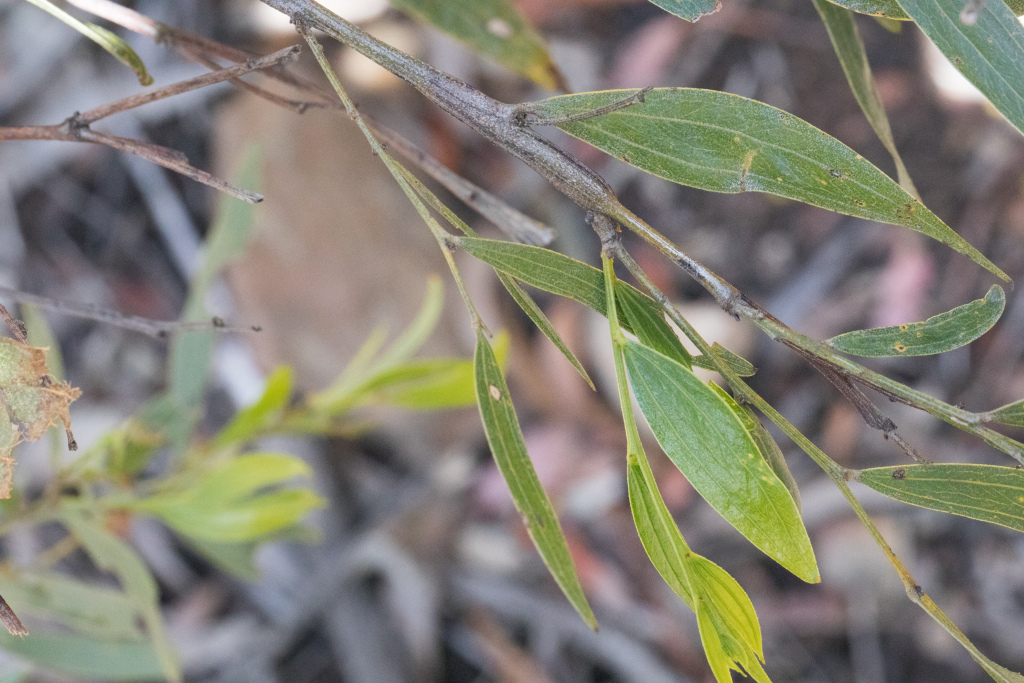Acacia leprosa var. graveolens
Maslin & D.J.MurphySpindly shrubs (1–)2–6 m high; branchlets with sparse to moderate cover of appressed, minute hairs on ribs. Phyllodes narrowly elliptic to oblong-elliptic, (3–)5–11 cm long, (5–)7–20(–30) mm wide; veins 2, one sometimes less prominent than the other, lateral veins often obscure; gland (0.5–)2–4 mm above the pulvinus. Peduncles (3–)4–8(–11) mm long, subglabrous or with appressed to sub-appressed hairs, sometimes densely hairy, basal bract early caducous, 1–2(–2.5) mm long. Heads mostly 20–35-flowered; bracteoles spathulate, 1(–1.5) mm long equal to or slightly longer than sepals, acute, sometimes acuminate. Flowers Aug.–Nov.
GipP, Gold, CVU, GGr, EGL, EGU, HSF, HNF, Strz, HFE. Also NSW, Tas. Widespread in tall Eucalyptus forest on and south of the Great Dividing Range mainly in eastern Victoria.
The most widespread and highly variable variety of A. leprosa. This name is generally applied to plants with 2-veined phyllodes that are not referable to the more restricted and well defined A. leprosa var. magna or A. leprosa var. crassipoda. Plants with distinctly hairy peduncles and elongated glands from the Kinglake-Marysville area may represent a distinct taxon.
 Spinning
Spinning

